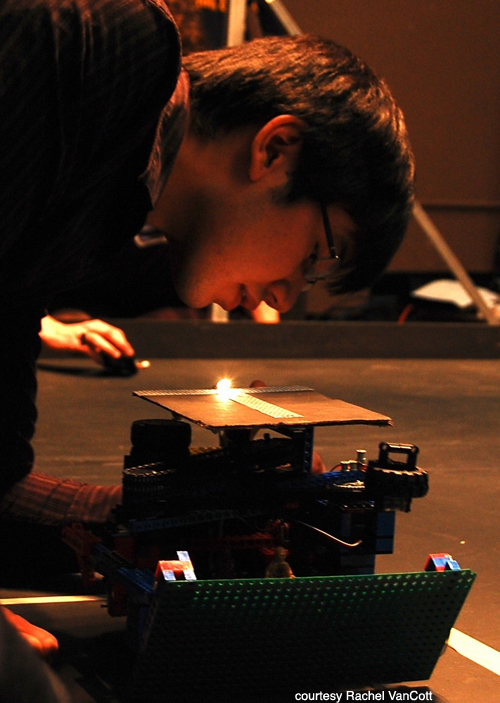 During a break between snow flurries last night, I slogged out to the MIT campus to watch the Autonomous Robot Design Competition. This year, the teams built autonomous "space cats"--Lego robots charged with hunting down and bringing back robot mice that (mostly) wandered the field of play.
During a break between snow flurries last night, I slogged out to the MIT campus to watch the Autonomous Robot Design Competition. This year, the teams built autonomous "space cats"--Lego robots charged with hunting down and bringing back robot mice that (mostly) wandered the field of play. The first few rounds were lackluster. But by the time robot Hulk Smash mistook robot Road Rage for a mouse and raised it high in the air and flipped it, the audience let out a shout.
As the competition wore on, I yelled for robots to look just left, no just left, the mouse is right there, you can do it.
Yeah, get it!
So why did I cheer for an inanimate object? It is not an isolated incident. I've offered emotional support to my computer during a particularly long program install, and tried to talk it down from a freeze up. I've asked a printer (nicely) to reconsider a memory shortage.















Recent Comments